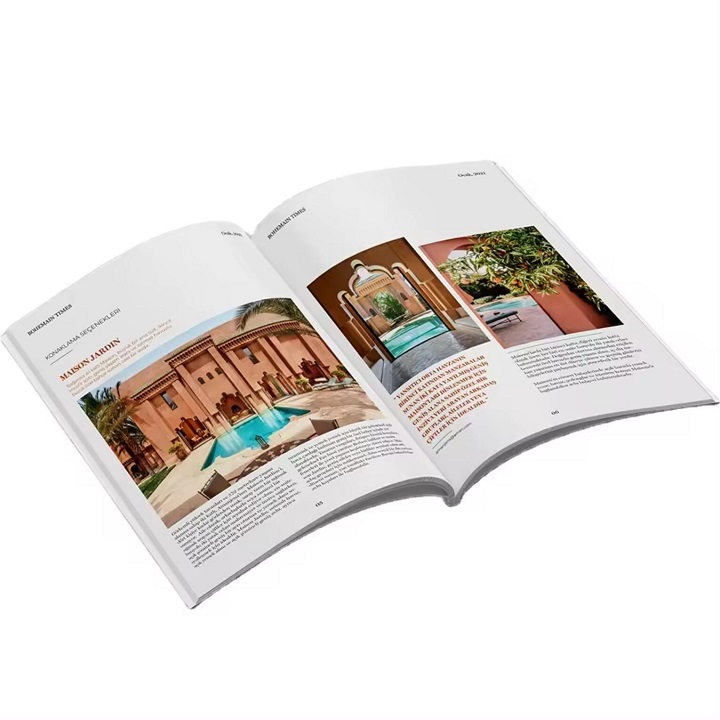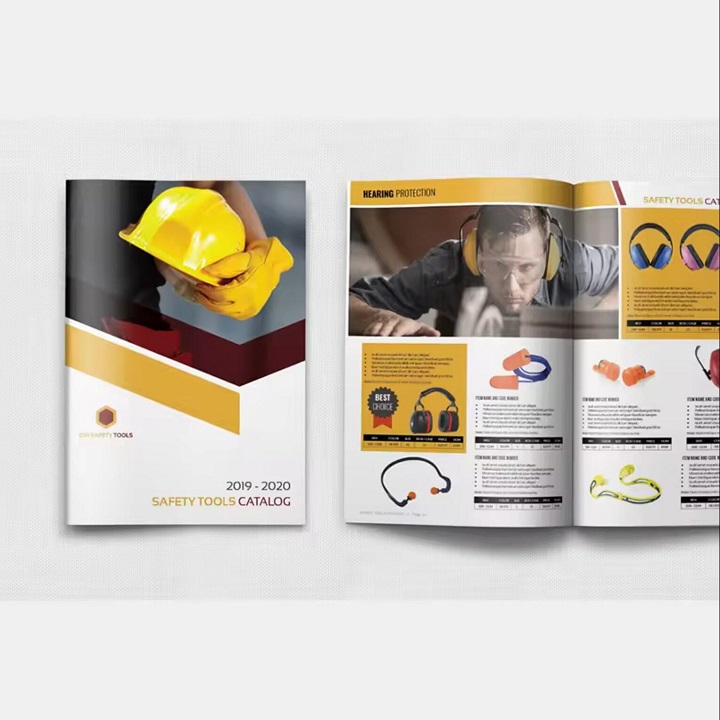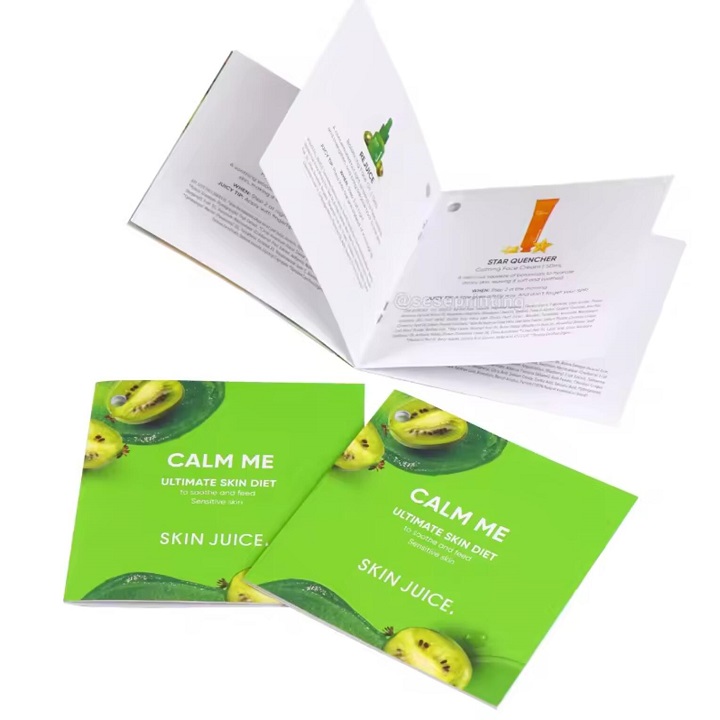Content Menu
● Introduction to Printed Booklets
● Benefits of Printed Booklets
>> 1. Tangible and Impactful Marketing
>> 2. Cost-Effective Promotion
>> 3. Versatile Use Across Industries
>> 4. Enhanced Brand Visibility and Customer Engagement
>> 5. Environmentally Friendly Options
● Designing Effective Booklets
● Printing Booklets
● Applications of Booklets
● Digital Integration with Booklets
● Case Studies of Successful Booklet Campaigns
● Future of Printed Booklets
● Conclusion
● Frequently Asked Questions
>> 1. What are the benefits of using printed booklets?
>> 2. How do I design an effective booklet?
>> 3. What are the common applications of booklets?
>> 4. How do I print a booklet?
>> 5. Why are printed booklets more effective than digital content?
In today's digital-centric world, where screens dominate our daily lives, the question arises: Are printed booklets still relevant? Despite the rise of digital media, printed booklets continue to play a crucial role in marketing, education, and communication. This article explores the enduring power of printed booklets, their benefits, and how they can be effectively designed and used.
Introduction to Printed Booklets
Printed booklets are compact, printed documents that convey information in an organized and visually appealing format. They are ideal for marketing materials, educational resources, and event programs. Unlike digital content, booklets offer a tactile experience that can leave a lasting impression on audiences.

Benefits of Printed Booklets
1. Tangible and Impactful Marketing
Printed booklets provide a tangible and impactful way to reach potential customers. They can include interactive elements like QR codes, testimonials, and quizzes, making them a powerful marketing medium. By distributing booklets strategically, businesses can enhance visibility and brand awareness.
2. Cost-Effective Promotion
Booklets are cost-effective compared to advertising in magazines or newspapers. They offer ample space for customization and diverse content, making them a budget-friendly option for brand awareness.
3. Versatile Use Across Industries
Booklets are versatile marketing tools used across various industries. They can be displayed in office reception areas, at events, or mailed to potential customers.
4. Enhanced Brand Visibility and Customer Engagement
Printed booklets enhance brand visibility by providing a physical presence that fosters greater engagement and stronger brand recall. Unlike fleeting digital ads, booklets remain with the audience, ensuring a memorable experience.
5. Environmentally Friendly Options
Booklets can be printed using environmentally friendly materials, making them a sustainable choice for businesses aiming to reduce their environmental footprint.

Designing Effective Booklets
Designing a booklet requires careful consideration of layout, imagery, and typography. Here are some design tips:
White Space: Use white space effectively to guide the reader's eyes and create a clean design.
Layers: Layer sections with prominent colors to achieve a textured look.
Clear and Colourful: Use clear typography and vibrant colors to make the content engaging.
Monochrome: Sometimes, simplicity with black and white designs can be impactful.
High Impact Imagery: Use high-quality images to tell your story.
Printing Booklets
Printing booklets involves several steps:
1. Choose Paper: Select the right paper type, such as satin or gloss paper.
2. Format Pages: Set up your document in a booklet format with adequate margins.
3. Add Content: Include text, images, and headings in an organized manner.
4. Print: Use manual or automatic duplex printing depending on your printer.
5. Bind: Bind the pages with staples, stitching, or other methods.
Applications of Booklets
Booklets serve various purposes:
Product Catalogs: Showcase product lines with detailed descriptions and imagery.
Company Brochures: Introduce businesses and their missions.
Event Programs: Guide attendees through events with schedules and highlights.
Instruction Manuals: Provide clear usage instructions with visuals.
Annual Reports: Convey financial data and success stories in an organized format.

Digital Integration with Booklets
While digital media is prevalent, integrating digital elements into printed booklets can enhance their effectiveness. Here are some ways to combine digital and print:
QR Codes: Include QR codes that link to videos, websites, or social media.
Augmented Reality (AR): Use AR to bring static images to life.
Digital Supplements: Offer digital versions of booklets for those who prefer digital content.
Case Studies of Successful Booklet Campaigns
Several businesses have successfully used booklets to boost their marketing efforts:
1. Fashion Brand: A fashion brand created a booklet showcasing their latest collection, which was distributed at fashion shows and in-store. The campaign resulted in increased brand recognition and sales.
2. Educational Institution: An educational institution produced a booklet highlighting their programs and achievements. This helped attract more students and increased enrollment.
Future of Printed Booklets
As technology advances, printed booklets will continue to evolve. They might incorporate more interactive elements, such as NFC tags or smart paper, to bridge the gap between physical and digital media.

Conclusion
Printed booklets remain a powerful tool in the digital age, offering tangible marketing, cost-effectiveness, versatility, and enhanced brand visibility. By designing and printing booklets effectively, businesses can engage audiences more deeply than digital media alone.
Frequently Asked Questions
1. What are the benefits of using printed booklets?
Printed booklets offer tangible marketing, cost-effectiveness, versatility, enhanced brand visibility, and environmentally friendly options.
2. How do I design an effective booklet?
Use white space, layers, clear typography, and high-quality imagery to create an engaging design.
3. What are the common applications of booklets?
Booklets are used for product catalogs, company brochures, event programs, instruction manuals, and annual reports.
4. How do I print a booklet?
Choose the right paper, format your pages, add content, print using duplex printing, and bind the pages.
5. Why are printed booklets more effective than digital content?
Printed booklets provide a tactile experience, are perceived as more credible, and require less cognitive effort to process.
































